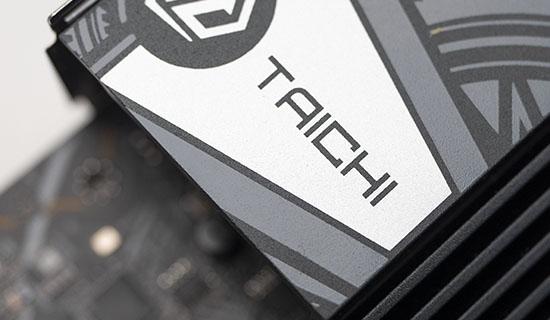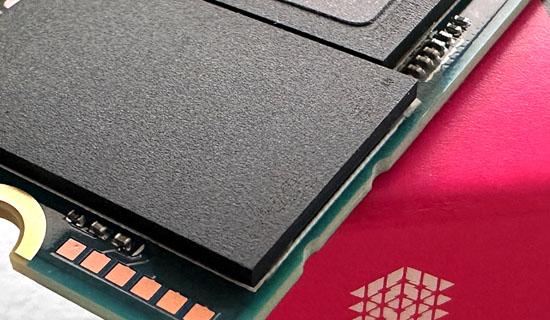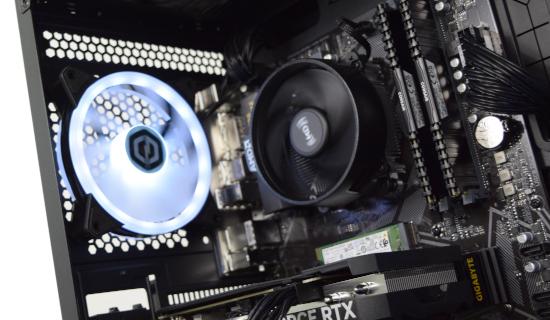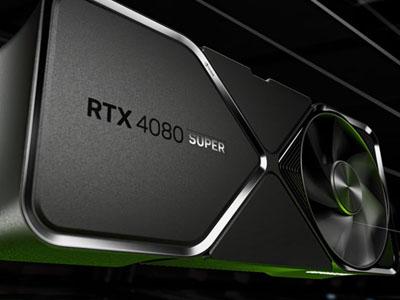Having spent some time with ASRock’s B650E Taichi Lite it’s time to bring together our thoughts on one of the more focused motherboard designs currently available in the AMD 600-series landscape. It will probably come as no surprise to hear us describe this motherboard as not for everyone, but it’s true even within the narrower field of B650E designs under US$350 / Ł350.
There’s little doubt that there’s no issue with the Taichi Lite’s benchmark attainment, where it dukes it out with X670E competitors using otherwise similar system components. It’s also able to argue its spot against the significantly more affordable B650 non-E designs, a fact that’s always nice to see given the yawning gulf in price between the cheapest and most expensive 600-series designs on the market today.
The issue that this motherboard will have is in comparison to some of its B650E rivals. The Taichi Lite broadly justifies its price point through the Taichi’s range key advantage: a 22-phase power system compared to usually 16-phase power for those boards in its price range. This will make a difference for stability while running overclocks towards the higher end of a CPU’s capability, in theory, but practically speaking relatively few interested parties are likely to push to that extreme.
Furthermore, if a user did engage in genuinely high-end overclocking then the VRM temperatures may be a concern. These rather anaemic heatsinks would ideally want greater air-flow than can really be offered by our standard test setup, or replacement with a full-cover waterblock. The former might require getting creative with fan placement and CPU cooler choice, whereas the latter adds significant expense even if aftermarket brands supported the board layout.
A solid core feature-set that includes WiFi 6E, USB 4 and ‘future-proof’ PCIe 5.0 support through both an x16 slot and long M.2 storage is extended with a few tools catering towards hobbyist overclockers. An explicitly allocated 36W water pump header and surface-mounted power buttons sound minor to some but will be key factors for others. Indeed, the digital troubleshooting display for boot codes is great for anyone and especially valuable for those who tinker with BIOS settings to hit just the right performance sweet-spot.
Speaking of troubleshooting, it’s great to see ASRock’s ongoing adoption of BIOS Flashback functionality without needing to have a CPU installed or (in this instance) even power on the system. It offers genuine peace of mind to experienced users who purchase the board deep into the platform’s generation when a particular new CPU might not be recognised by the shipped BIOS.
Trouble arises for the Taichi Lite however in comparisons with other boards, such as ASRock’s own B650E Steel Legend, that push more mainstream features and/or aesthetics at the same or slightly lower price points. They might not be quite so robust from an overclocking standpoint, but they might offer more high-speed storage, flexible expansion options, or just might be more keyed into being conventionally attractive (as motherboard go); all at a slightly lower price point.
So, can we give the Taichi Lite a vocal recommendation? Only if you’re enthusiastic about overclocking with AMD’s 7000-series CPUs and maintaining a modern feature-set, yet view aesthetics as a very minor convenience. For the mainstream user there are too many other B650E boards that will do more for less to give it more than a modest endorsement, but those who fit in the niche outlined above will welcome the B650E Taichi Lite with the widest of smiles.
ASRock’s B650E Taichi Lite joins an increasingly packed AMD 600-series lineup to cater to platform overclockers at a far lower price point than X670E would allow. It boasts PCIe 5.0, USB 4 and PCIe Gen5 x4 storage as features for the future but is far from the most attractive of designs, even at the ~US $300 price point. The end result is for those whom ‘CPU VRM’ are the six most important letters on the technical sheet, not ‘RGB LED’.
Pros
+ Support for entirety of AMD’s Ryzen 7000-series lineup
+ Cutting-edge features such as PCI-Express 5.0
+ 22-phase CPU power
+ Additional tools for overclocking and troubleshooting
+ Considerably less expensive than most comparable X670E designs
Cons
- Not the most attractive of designs
- VRM cooling might need to be augmented in some system setups
- Remains to be seen if M.2 cooling is adequate for upcoming M.2 PCIe Gen5 x4 drives.
+ Support for entirety of AMD’s Ryzen 7000-series lineup
+ Cutting-edge features such as PCI-Express 5.0
+ 22-phase CPU power
+ Additional tools for overclocking and troubleshooting
+ Considerably less expensive than most comparable X670E designs
Cons
- Not the most attractive of designs
- VRM cooling might need to be augmented in some system setups
- Remains to be seen if M.2 cooling is adequate for upcoming M.2 PCIe Gen5 x4 drives.























